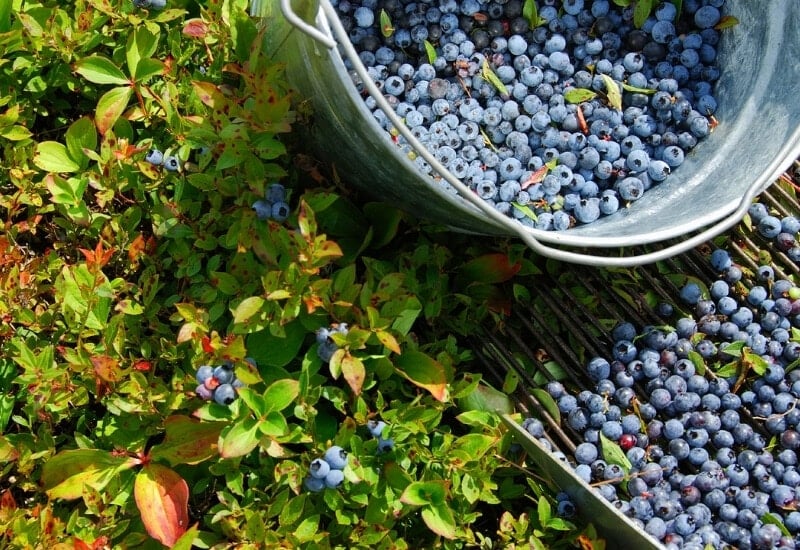
Blueberries, or Vaccinium sect. Cyanococcus is a group of perennial flowering and berry-bearing plants from America, Europe, and Asia.
They are great for your diet, popular as food worldwide, but they also have good decorative value, thanks to their pretty flowers, their colorful berries, and the overall look of the shrubs.
There are natural and hybrid cultivars, but the main four types of blueberries are highbush, lowbush blueberries, hybrid half-high, and rabbiteye (they change color as they mature).
Blueberry is not a species, and in fact, there are about 150 varieties of blueberries, and not all are actually blue. To enjoy a homegrown harvest of blueberries, you need to choose cultivars that grow well in your region.
To help you decide the best types of blueberry plants are suited to your region, in this article, we’ve put together a roundup of 10 easy-to-find and grow blueberry varieties, with information on growing zones and growth habits, berry quality, and more.
Blueberry Plant Description
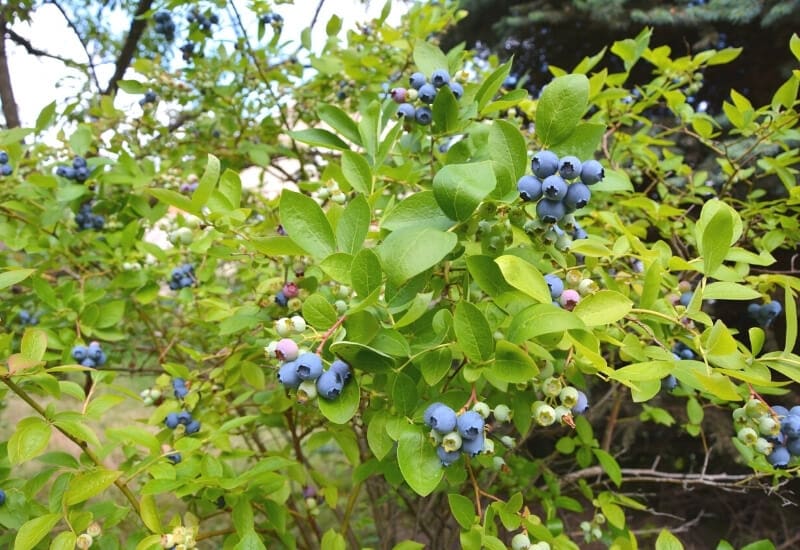
Blueberries are usually prostrate perennial shrubs, which means that the branches tend to stay low on the ground. They are part of a genus, Vaccinium, which includes also cranberries, bilberries and huckleberries, to which they are related.
But blueberries are not a species of the genus, but a section, called Cyanococcus. A section is a group between the genus and the species, and scientists only use it with few plants or animals.
They are all flowering plants and the flowers are usually white, sometimes pink, “nodding” (they look down) and bell shaped, and they appear in clusters of one to two dozens in late spring to summer. The berries follow and they stay on the branches till they are mature, when they drop to the soil and seed.
However blueberries also reproduce through rhizomes at the base of the plants. The new small shrub you get in this case is an exact clone of the mother plant.
Most cultivated varieties for food come from North America, and they are usually divided into two groups: lowbush (usually wild) and highbush (preferred for cultivation).
Blueberries’ Nutritional Value

Blueberries are mainly grown for their outstanding nutritional values. In fact, they contain an impressive and rich array of micronutrients like vitamin C, A, B1, 2, 3, 5, 6 and 9, E and K, dietary mineral manganese, fiber, beta- Carotene, calcium, iron, zinc and other minerals.
Blueberries’ Health Benefits
There are so many proven health benefits of blueberries including:
So, you see, blueberries are not just beautiful and delicious. They are also very useful for your health.
Blueberry Care Fact Sheet
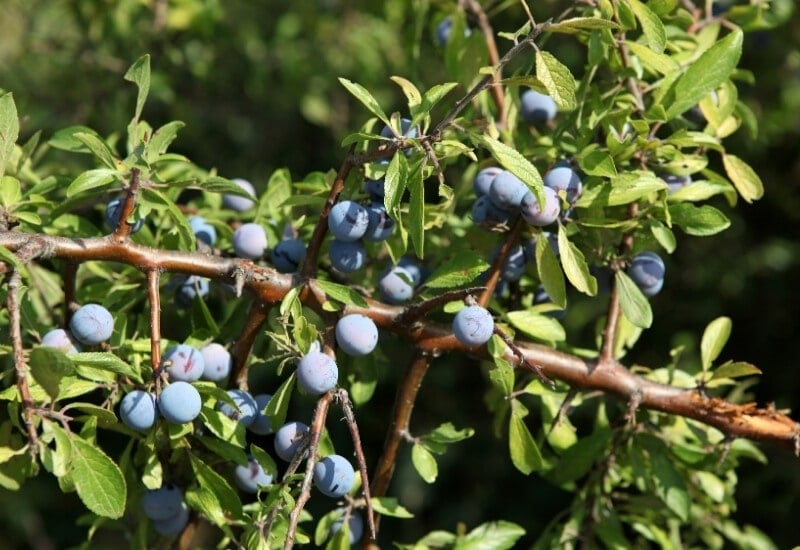
Here is an easy to use fact sheet on blueberries you can copy and stick on your fridge (or shed wall) to keep all the details you need to know about this plant in sight.
And now, let’s see all the different types individually, ready?
Top 10 Blueberry Varieties For Your Garden
Not all of these will be suitable for your garden. A lot depends on the climate, and some like warmer weather and some like colder weather.
You will find which zone each plant likes soon, when we meet them one by one. Now, however, some facts about blueberries.
Here are 10 of our favorite cultivar blueberry varieties for the home gardener to include.
1: Blueberry ‘Sunshine Blue’ (Vaccinium Corymbosum ‘Sunshine Blue’)
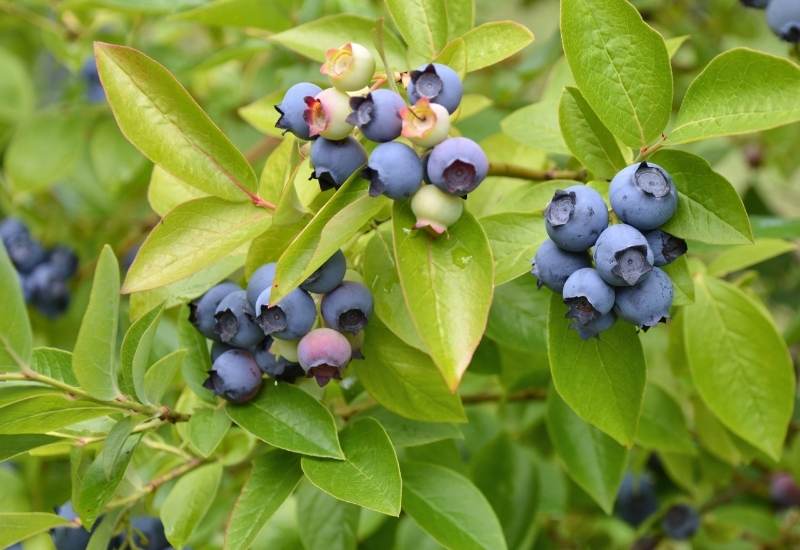
Blueberry ‘Sunshine Blue’ is a highbush cultivar with great decorative qualities. In fact the flowers are of a nice pink color, but of course, its name comes from the vivid blue color of the berries.
It is not small not particularly tall, which makes it ideal for borders and low hedges. It will attract lots of birds too to your garden when the blueberries start to ripen, and the foliage will give a final splash of color, taking on red shades, when fall arrives and the season comes to an end.
2: Blueberry ‘Bluecrop’ (Vaccinium Corymbosum ‘Bluecrop’)
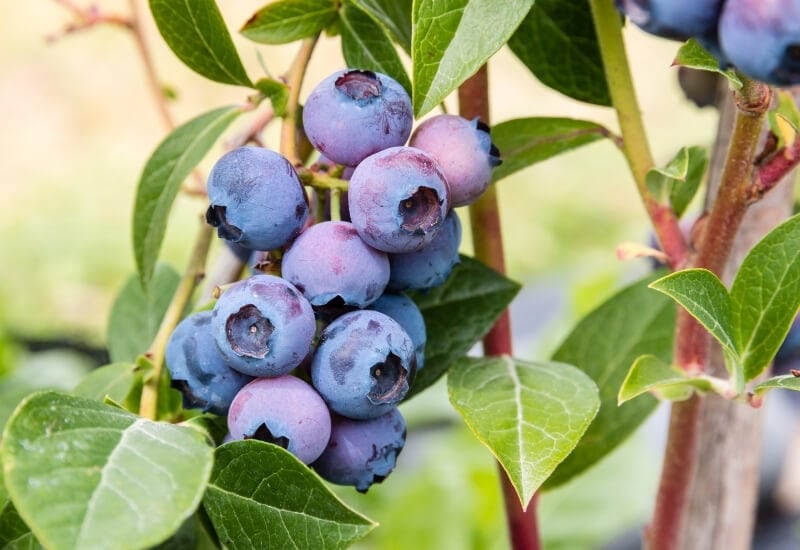
Blueberry bluecrop is a highbush cold-hardy variety with good yield thanks to its fairly large size. This berries are also easy to market, thanks to their large size and classical deep dark blue dolor. This is, in fact, the most popular cultivar in the world.
While it is mainly a crop variety, it does put on a beautiful show with its bountiful white flowers, red stems in between the bright green foliage and then, of course, its almost black blueberries.
3: Lowbush Blueberry (Vaccinium Angustifolium)
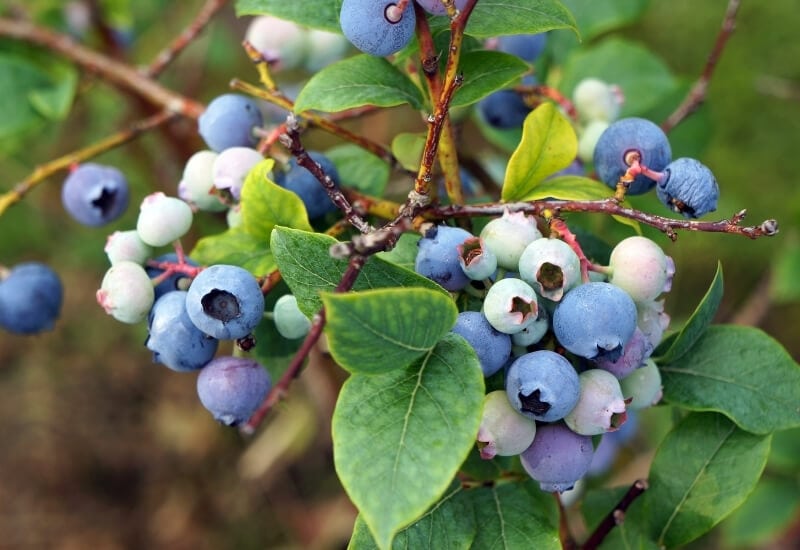
Vaccinium angustifolium, commonly known as the wild lowbush blueberry, is a lowbush and wild blueberry variety from Canada and the North of the United States.
It forms low bushes with bright green and beautiful leaves, and the berries are of a beautiful bright blue color.
The berries are sought after for their flavor and high nutritional value. Even if it is small, it will produce very generous crops: up to 150 million blossoms per acre, and most will produce a berry! It is an excellent variety for food forests, as it can grow well under the dappled shade of trees, including conifers.
4: Blueberry ‘Pink Icing’ (Vaccinium ‘Pink Icing’ Or Cultivar ZF06-079)
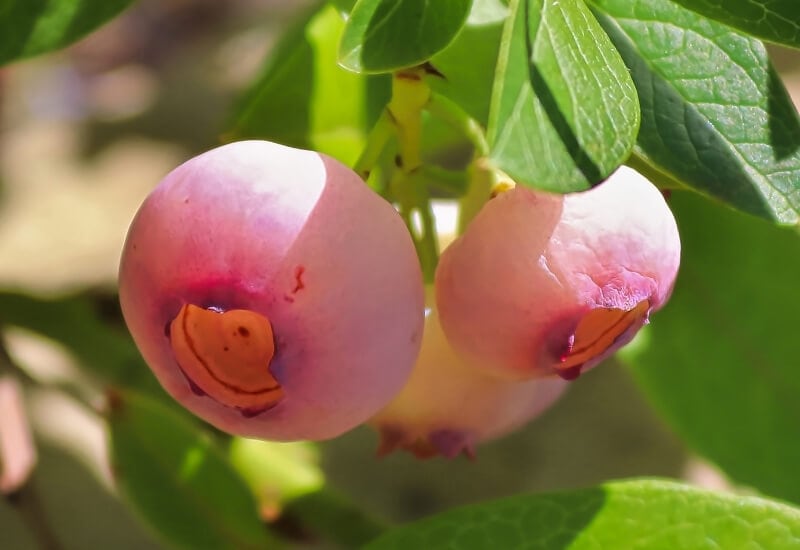
Blueberry ‘Pink Icing’ is an excellent young cultivar for decorative purposes. In fact, the name does not come from the berries; these turn dark blue when they are mature.
The foliage of this highbush variety, however, put on a great display of colors. They are green with some pink, blue and even turquoise in winter. The color, however, depends a lot on the light, so, it is best to grow it in full Sun.
The berries are also particular because they have a much stronger flavor than most blueberries.
5: Blueberry ‘Top Hat’ (Vaccinium ‘Top Hat’)
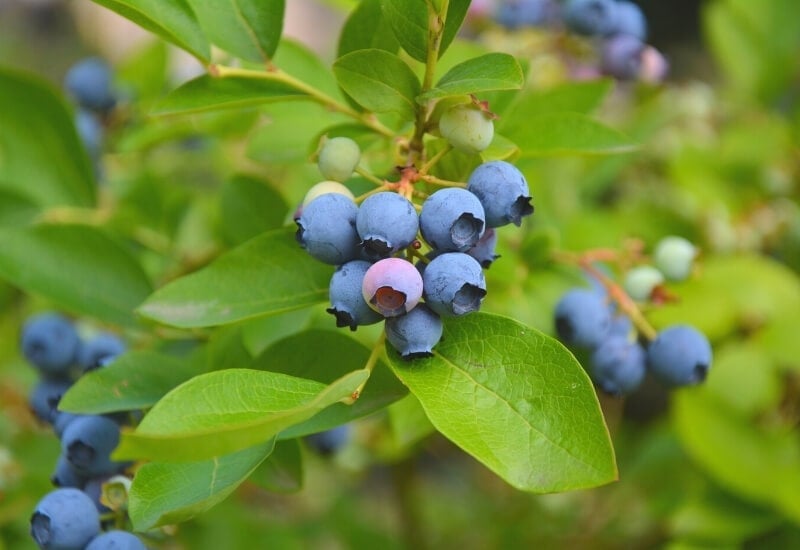
The ‘Top Hat’ cultivar of blueberries was has very dark blue berries, rich hunter green colored foliage and modest dimensions.
This dwarf cultivar is ideal for small spaces, like terraces or flower beds, or even low borders. It gives the “temperate underbrush” look to the place you choose for it.
It was developed by Michigan State University mainly as a decorative garden plant, with white flowers while the leaves turn bronze in the fall. This variety can also be trained into a bonsai and it is ideal for pots.
6: Blueberry ‘Brightwell’
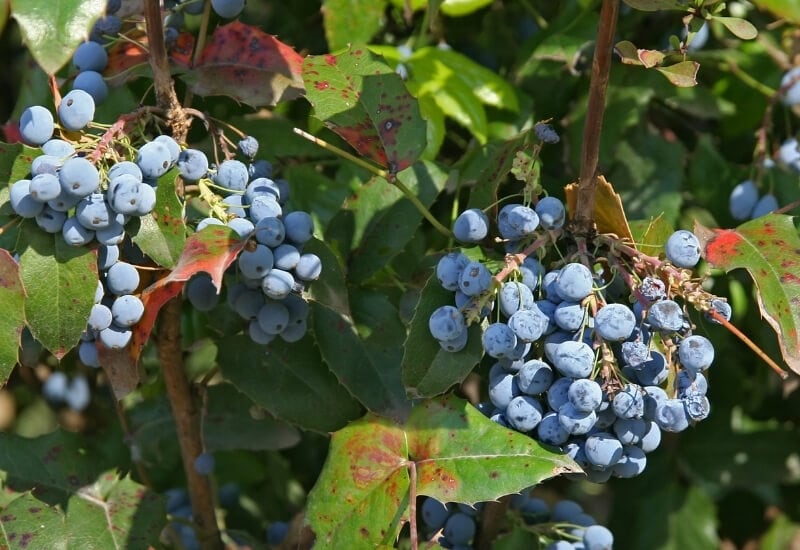
Blueberry ‘Brightwell’ is a large of rabbiteye blueberry with big and dark blue berries. This is mainly a crop variety.
In fact given its fairly bug but manageable size, it can be planted in tall rows that give a very good yield of marketable berries. It is also very generous with the yield.
The leaves are mainly green; they are beautiful too, and if you want, you can double up its productive use with its decorative potential. It can form hedges, even tall ones, and it can even be part of a windbreak.
7: Rabbit-Eye Blueberry (Vaccinium Virgatum)
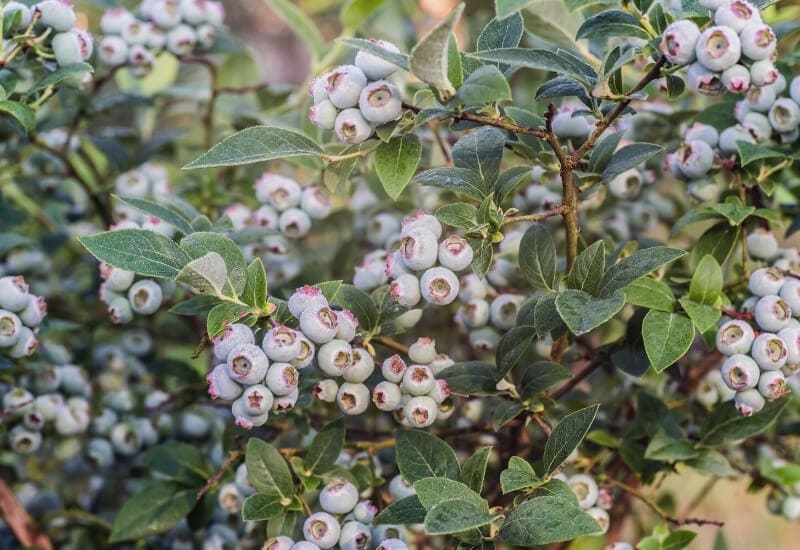
Rabbit-eye blueberry is a wild species from the Southeastern United States. It will fruit too, but I would suggest it mainly as a decorative plant.
In fact, this bush has a very elegant, upright and open habit, with thin and long stems that bear the white bell shaped flowers and then the dark blue berries. The effect is delicate and suitable for borders and hedges in informal gardens.
The berries and flowers, in fact, are spread over the branches, not in big clusters like with other varieties. This makes this natural highbush very original indeed.
8: Evergreen Blueberry (Vaccinium Darrowii)
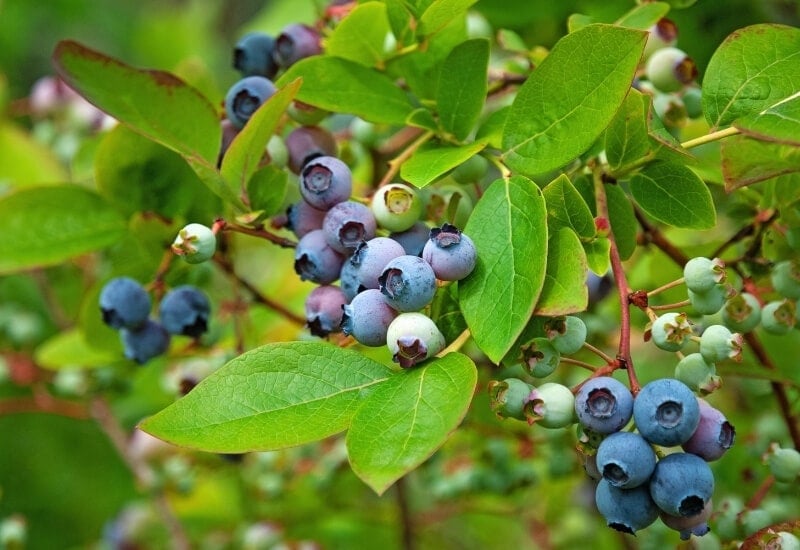
Evergreen blueberry is a native species from the Southeast of the US, where it grows in the acidic soil of pine forests. It forms fairly thick bushes with beautifully textured green and blue green foliage.
These have an oval to round habit, and they look really decorative in gardens, where they can be trained to take on rough geometric shapes.
The flowers are off white and profuse, and the berries dark blue. There are a few cultivars in. this species, like ‘O’ Neil’, ‘Cape Fear’ and ‘Legacy’. Of course, the great asset of this blueberry as a garden shrub is that it is evergreen!
9: Hairy-Fruited Blueberry (Vaccinium Hirsutum)
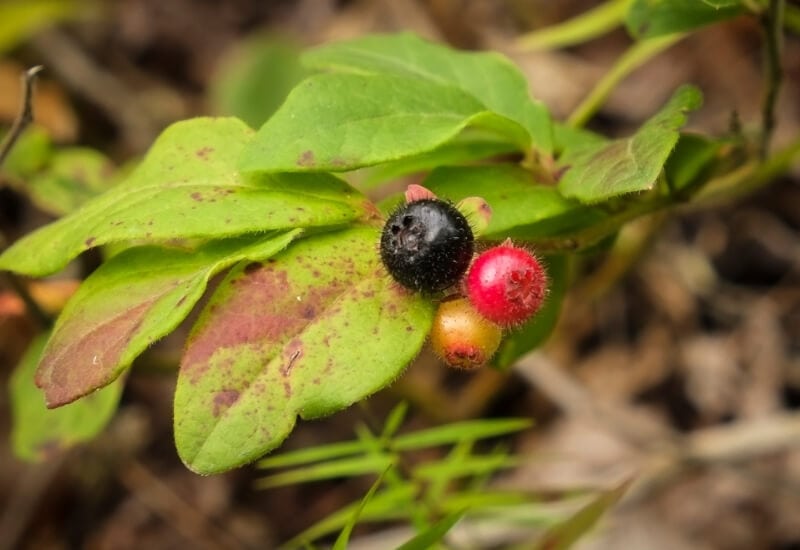
Hairy-fruited blueberry is an unusual shrub of this group… In fact, it is ideal if you want to be original, and it has some very special features that make it quite interesting as a decorative garden plant. Why?
Unlike all other blueberries we have seen so far, this one has thick, large elliptical leaves and the berries are black… but covered in a furry dawn that makes them stand out from her sisters…
It is a natural species from Tennessee, Georgia and the Carolinas, so it adapts very well to temperate regions. Its natural environment is oak –pine ridges and in fact it looks perfect for an informal, forest inspired garden.
10: Blueberry ‘Pink Popcorn’ (Vaccinium Corymbosum ‘MnPink’)
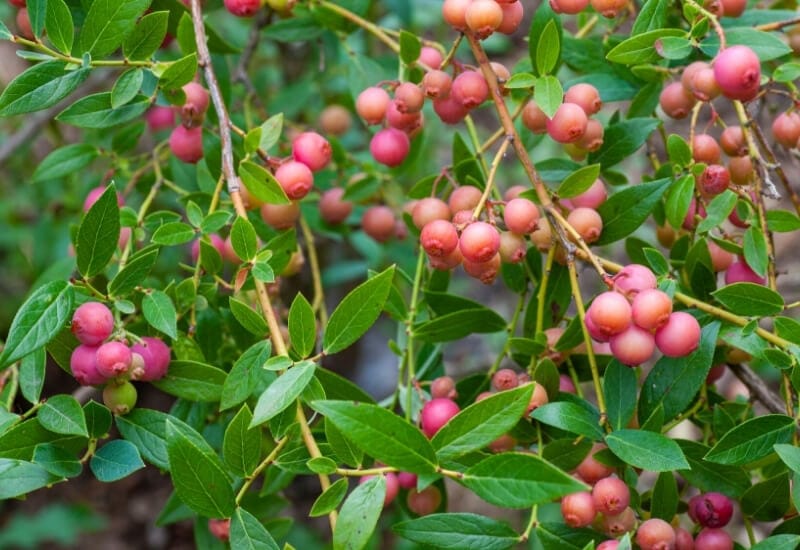
Blueberry ‘Pink Popcorn’ is an exceptional cultivar of this shrub. Why? Well, the berries are not actually blue nor black. In fact it is more of a “pinkberry” than a “blueberry”.
You guessed right: the berries are of different white to pink shades, going though light rose and reaching deep pink purple hues at the crown of the berries themselves.
The berries are quite attractive and unusual, real eye-catchers against the backdrop of the bright emerald green foliage.
But they are edible and nutritious too, and perfect for freezing. This is an excellent plant for a romantic border or even in containers.
Blueberries: A Feast For The Eyes And For Your Table Too!
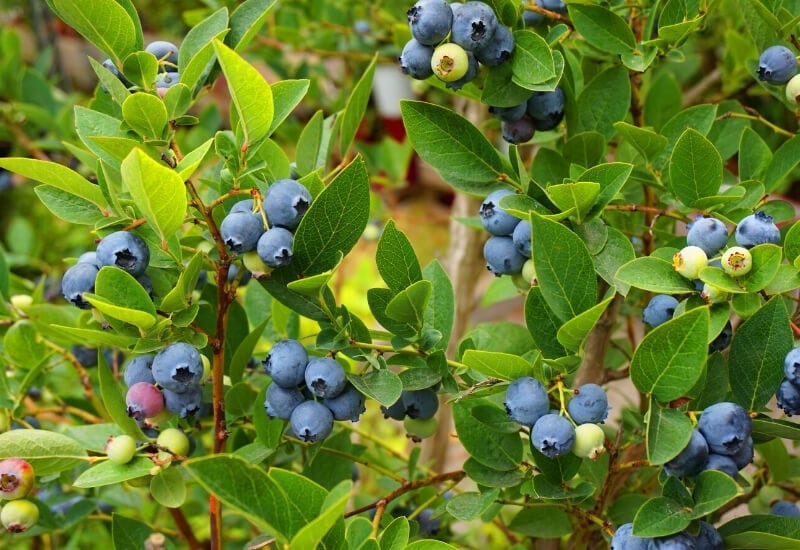
I bet you had not expected that there are so many different types and varieties of blueberries! Most of us think blueberries are just one plant.
For those of us who have had the pleasure of seeing wild one in mountain forests, they are those bluish black berries that grow in small shrubs under pine trees and firs.
But now you know that this is not the whole story. Some are small, some are big, some are evergreen, some have pink flowers and others even pink berries, and one of them even has black and hairy berries…
And with new cultivars being invented all the time, we can be sure that these delicious and nutritious and beneficial berries will give much pleasure to our eyes and taste buds for years if we plant them in our garden.
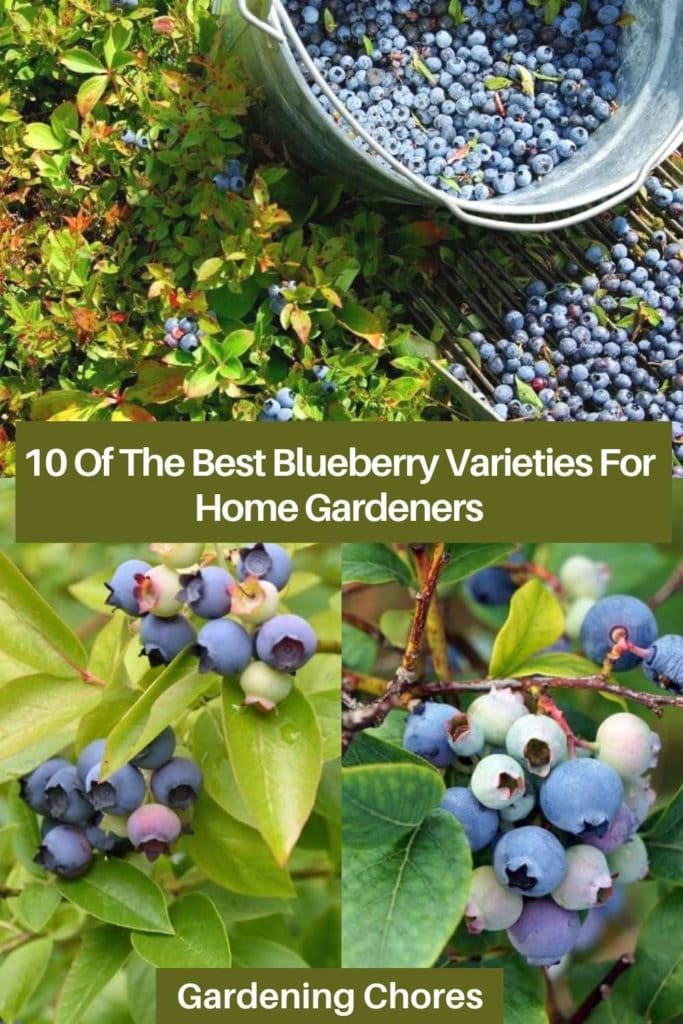

Written By
Bethany Hayes
Bethany is a suburban homesteader, growing over half of the vegetables, fruit, and herbs that her family of six needs each year. She raises chickens and homeschools her children. When she isn’t spending time tending to her garden, you can find her reading, crocheting, and canning.
